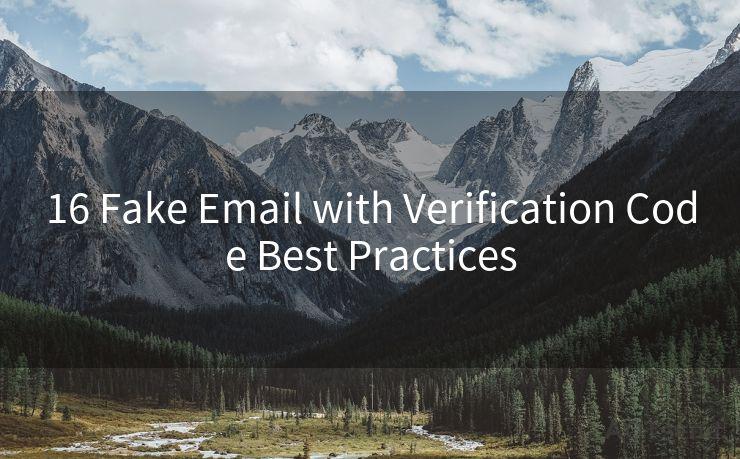16 Fake Email with Verification Code Best Practices




In the digital age, email verification codes have become a crucial aspect of online security. However, with the rise of fake emails containing verification codes, it's essential to understand the best practices to protect yourself from potential scams and frauds. Here are 16 best practices to help you navigate the murky waters of fake emails with verification codes.
1. Recognize Authentic Emails
The first step is to familiarize yourself with the official emails from the services you use. Look for official logos, branding, and email addresses. Authentic emails usually have a professional appearance and tone.
2. Verify the Sender's Email Address
Always check the sender's email address. Official emails often come from specific domains, while fake emails may use similar but slightly altered addresses.
3. Beware of Urgency
Scammers often use urgent language to pressure you into action. Be cautious of emails that demand immediate action, such as "Your account will be closed if not verified immediately."
4. Don't Click Suspicious Links
Never click on links in suspicious emails, especially if they ask for personal information. These links may lead to phishing websites designed to steal your data.
5. Hover Over Links
Before clicking any link, hover over it to check the URL. This can help you identify if the link is directing you to a legitimate website.
6. Check for Spelling and Grammar Errors
Official emails are usually well-written and proofread. Spelling and grammar errors are common in scam emails, indicating their lack of professionalism.
7. Ignore Threats and Demands
Scammers often use threats to intimidate their targets. Ignore any threats or demands for personal information.
8. Contact the Company Directly
If you're unsure about an email's authenticity, contact the company directly through their official channels to verify.
9. Use Two-Factor Authentication
Whenever possible, enable two-factor authentication for added security. This ensures that even if someone has your password, they still need a second verification method to access your account.
10. Update Your Antivirus Software
Keep your antivirus software up to date to protect your system from malicious links or attachments in fake emails.
11. Don't Download Unknown Attachments

Avoid downloading attachments from unknown or suspicious emails. These attachments may contain malware.
12. Report Suspicious Emails
If you receive a suspicious email, report it to your email provider and the relevant authorities.
13. Educate Yourself
Stay informed about the latest scams and frauds. Knowledge is power, and it can help you avoid falling victim to these schemes.
14. Use Strong Passwords
🔔🔔🔔
【AOTsend Email API】:AOTsend is a Managed Email Service for sending transactional emails. Support Email Types: reminders, authentication, confirmations, notifications, verification codes, invoices, password resets, account activations, billing statements, two-factor authentication (2FA), and one-time passwords (OTP) emails, etc. $0.28 per 1000 Emails. 99% Delivery, 98% Inbox Rate.
You might be interested in:
Why did we start the AOTsend project, Brand Story?
What is a Managed Email API, How it Works?
Best 25+ Email Marketing Platforms (Authority,Keywords&Traffic Comparison)
Best 24+ Email Marketing Service (Price, Pros&Cons Comparison)
Email APIs vs SMTP: How they Works, Any Difference?
Create complex and unique passwords for each account. This adds another layer of security to your online presence.
15. Regularly Review Account Settings
Periodically check your account settings to ensure no unauthorized changes have been made.
16. Be Vigilant
Always be on the lookout for suspicious activity. Your vigilance is your best defense against fake emails and online scams.
By following these best practices, you can protect yourself from the dangers of fake emails with verification codes. Remember, safety starts with awareness and ends with action. Stay alert, stay safe!




Scan the QR code to access on your mobile device.
Copyright notice: This article is published by AotSend. Reproduction requires attribution.
Article Link:https://www.mailwot.com/p2061.html



